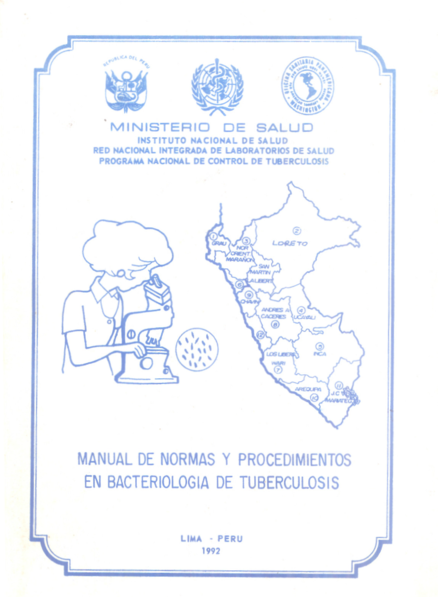Manual de normas y procedimientos en bacteriología de tuberculosis
El manual contiene las normas y procedimientos para la toma de muestra, la baciloscopia, medidas de bioseguridad, cuidado y conservación del microscopio, de casos de tuberculosis


